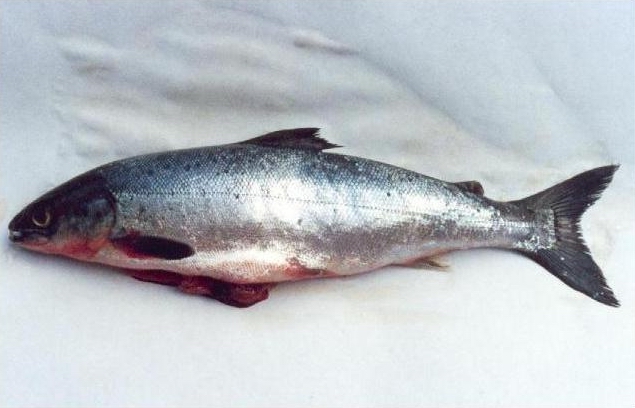How to Identify Atlantic Salmon

Atlantic Salmon are different from other cousins of this particular species of fish in a way that their gill covers are filled with large black spots and only few of these Atlantic Salmon have spots on their tail fins. Moreover, this salmon has fewer anal fin rays than the Pacific salmon.
Furthermore, this species of Salmon is capable of spawning more than once during its lifetime but most of them do not live to spawn the second time in their lives. Although they are somewhat similar to the pacific salmon, there are a lot of differences.
Instructions
-
1
The most striking feature of the Atlantic salmon is that it has a short face and the length of the mouth is different do. There mouth is smaller than those of the brown trout and the tail is forked and the body narrows down just before it.
-
2
After spending two years in a stream, Atlantic salmon becomes smolts and lose their parr marks. They also become silvery in order to survive in other kinds of water.
-
3
Atlantic salmon living in ocean have silvery colour and white underbellies.
-
4
When they are sexually mature, Atlantic salmon’s colour changes to bronze or dark brown with reddish spots on their head and body.
-
5
Spawning males tend to develop elongated heads and their jaws are large and hooked.
-
6
They have few large spots on their gill covers.
-
7
Unlike the brown trout, they do not have a red or orange tinge on the adipose fin.
-
8
The tail fin is more or less without any spots and there are no black spots either.
-
9
These salmons have 19 gill rakers of white colour on the inside of the first gill arch and less than 120 scales throughout the lateral line.
-
10
Most of the pelvic and anal fins of the Atlantic salmons are without leading edges.
-
11
When the salmon enters brackish water, it stops urinating and starts drinking water. The development of the chloride cells allow it to excrete salt while cortisol and thyroxine allows it to retain water and excrete salt.
-
12
The Atlantic salmon is native to the northern Atlantic Ocean, from the Arctic Circle to Portugal in the eastern Atlantic, from Iceland and Southern Greenland and from the Ungava region which lies on the north of Quebec.
-
13
Usually, Atlantic Salmon thrive in flowing waters where the gradient for spawning is moderate.
-
14
The biological name of the Atlantic Salmon is Salmo Salar.





